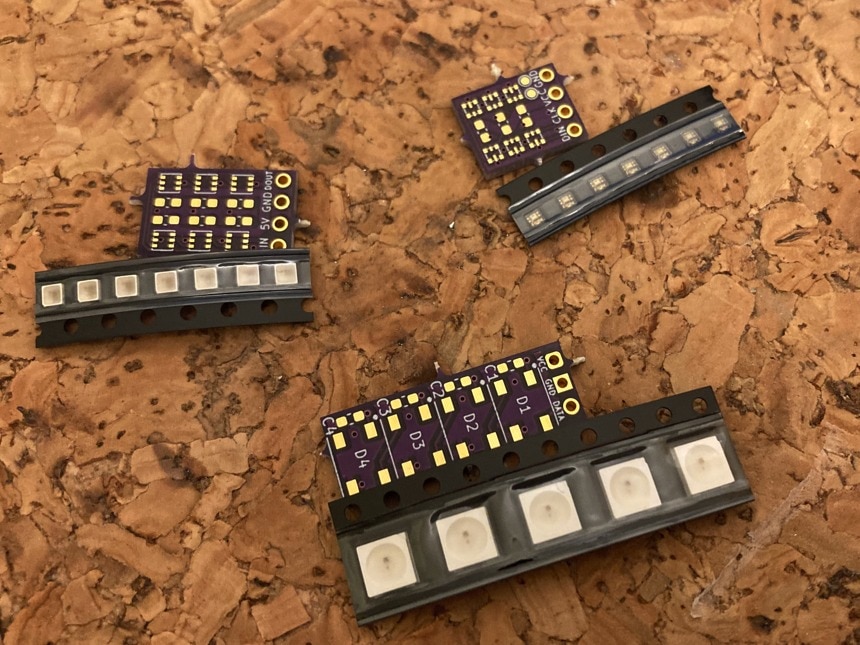Hello everyone. I welcome you to my first forum post as part of my participation in Light Up Your Life Challenge!. In this post I will describe my plans and status.
I posted application to this design challenge but my application was not one of the best. So, I was not selected as sponsored participant who received nice kit containing 150 WL-ICLEDs from Würth Elektronik. Even I was not selected, I decided to buy few LEDs on my own expense and play with them. I am joining this design challenge as self-sponsored.
My biggest issue as far was to acquire PCBs because they stuck for about three weeks longer than usual in customs and postal offices. They arrived yesterday, so I am starting about week before deadline but I was conservative at scheduling time. I did not plan any ultra complex project, so week for playing with fantastic Würth LEDs should be fine.
My project which I proposed in application was a tool for diagnostics of LED strip. Unlike others, I do not plan investigate their optical properties thoroughly because I do not own suitable equipment and I also do not plan any fancy blinky project (at least for now). Rather I want to play mostly about LEDs. I want to focus on LEDs interacting. Kit contains six different types of LEDs, but some of they have common interfacing. Technically, there are 3 different interfaces used:
- 24-bit single wire Interface. It is compatible with WS2812
- 48-bit single wire Interface. Has similar timing. But more data are transferred and allows configure both current limitation as well as PWM drive.
- 32-bit two wire Interface (not I2C). it can be driven by MOSI and SCLK pins of SPI peripherals (MISO and CS unused). Protocol Transfer 24-bit of collor data for PWM control and 8-bit control byte which can set even current limiting.
Since I am self-sponsored, I did not buy all six kinds of LEDs. Instead, I bought 3 types of LEDs which each type support different interface. Here is sneak peek:

I want to do following experiments around LED interfacing:
- Test BI pin which allows continuing operation if one LED on chain is broken
- Test possibility to combine 24-bit and 48-bit on single LED chain
- Automatically count LEDs on LED strip of unknown LED count
These experiments I want to conclude before starting working on my main project: diagnostic tool which will identify LED strip length, hopefully will support even chains combined from 24-bit and 48-bit LEDs and will be capable to characterize every LED on bus, identify possible faulty LEDs and locate them.
So that’s all for introduction. Stay tuned for next forum posts and final project post. They should all get published this week. I already soldered LEDs to my PCBs. I will post forum and share my thoughts about it later today or tomorrow.
Next forum post: Misaz’s WL-ICLED experiments: It’s soldering time
